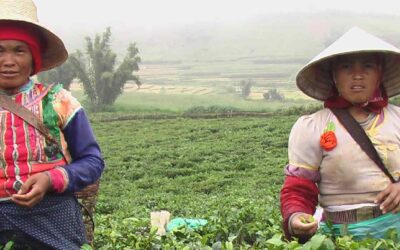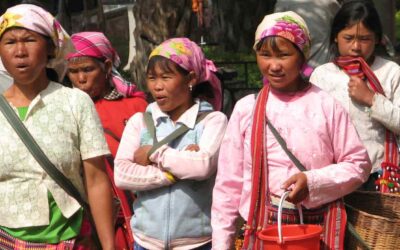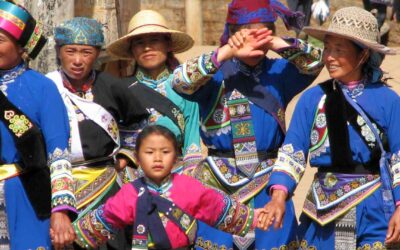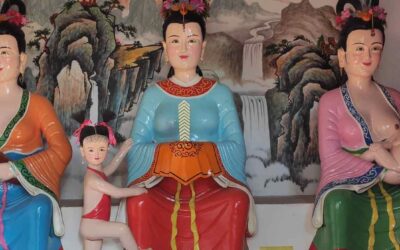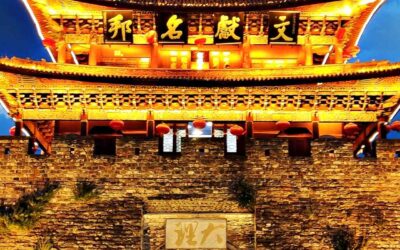Mao Dun’s Spring Silkworms-A must read
In short: A set of stories of exacerbated realism by one of the finest pens of 20th century Chinese literature, which no one should miss in order to understand both the literature and the life and history of contemporary China.
After my disappointment in recent days with Mao Dun’s «Midnight», I have reread the short stories and novellas collected under the title «Spring Silkworms and other stories». I had already read the book 20 or 25 years ago, and when I took it in my hands again I knew that I was facing some hard stories in which the suffering of his characters is described with an almost mathematical precision, the causes of the same are chained in a concatenation of events and policies that only result in ruin, disaster, hunger, suffering.
The corrupt policies of the Kuomintang government, the Japanese invasion, usurious loans, with monthly interest, taxes, political and natural calamities, all play against the common people, always the losers. And although Mao Dun almost always leaves the reader on the brink of the disaster, when it already seems inevitable, and strives to make the protagonists of his stories the families or characters who are not the ones who are suffering the most from historical and political circumstances that condemn millions of people to hunger and misfortune, the reader ends each of the stories with a heavy heart.
Each of these stories is a masterpiece. The descriptions of family decadences encompass a broad geographical, economic, labor and social spectrum, as if the author in writing them and the publisher in putting them together in this volume wanted to show a reality of Leo Tolstoy’s phrase: «All families are alike in happiness, each is different in its misfortune.»
And one of the fascinating aspects of the work is that it shows how misfortune affects anyone, changing their life prospects overnight, sometimes in the midst of disbelief, like Mr. Li from «Wartime,» or Miss Lin from «The Lin Family Store.» As if the first blows of a fortune that is going to become increasingly adverse will be met with the disbelief of those who live their normal lives.
Precisely these two stories, along with those that tell us about the atmosphere in the village of Old Tong Bao, shaken first by the falling prices of silk cocoons and then of rice, are the most elaborate. And while the first two tell us about a misfortune that we could call conjunctural, a war in «Times of War» or a complex political and economic moment in «The Lin Family Store», the second ones tell us about a system that cannot be maintained any longer, as it leaves the peasants continually on the edge of the abyss of misery.
In short, we find ourselves with a set of stories that no one should miss to understand both literature and the life and history of the first half of the twentieth century in China.
Mao Dun. Spring Silkworms and other stories. Translated by Sydney Shapiro. Foreign Language Press. Beijing. 1979.
Cite this article as: Ceinos-Arcones, Pedro, «The first description of the Religion of the Yi,» in Ethnic China, 21 marzo 2021, https://ethnic-china.com/the-first-description-of-the-religion-of-the-yi/.
Last posts
The Bull that Shaped the World and Other Sacred Bovines among the Bulang Minority
The Bull that Shaped the World and Other Sacred Bovines among the Bulang Minority The Bulang people (布朗族), an Austroasiatic ethnic group primarily inhabiting Yunnan’s tea-growing highlands, revere the ox as a sacred being intertwined with creation, agriculture, and...
The Lahu Matriarchy: An Egalitarian Dyadic Society in China
The Lahu Matriarchy: An Egalitarian Dyadic Society in China From the book: Mothers, Queens, Goddesses, Shamans: Matriarchy in China (Miraguano, Madrid, 2011) The egalitarian society of the Lahu drew academic attention with Du Shanshan’s study Chopsticks Only Work in...
An Old Book on the Sani-Yi Minority
An Old Book on the Sani-Yi Minority One may wonder whether it makes any sense to read, in the first decades of the 21st century, a book written at the end of the 19th. Clearly, the person who has spent some of their time translating it, revising it, updating the old...
Sexual aspects of Gu venom
Gu illness resulted from a contamination by gu poison, which a recent analyst has characterized as “an alien evil spirit which entered [the] body and developed into worms or some similar animal that gnawed away at the intestines or genitalia.” This poison was thought...
Sunset in Dali
No Words Fuxing Rd from the South Gate. Dali, Yunnan.Corner in Fuxing Rd, Dali, Yunnan.Night market at the south of the South Gate. Dali. YunnanLast posts
The five secret temples of the lamas in Lijiang
The five secret temples of the lamas in Lijiang Religions of Lijiang Although the city of Lijiang is known primarily for the Dongba religion practiced by the traditional shamans of the Naxi, also called Dongba, who with their rituals administered the religious and...





